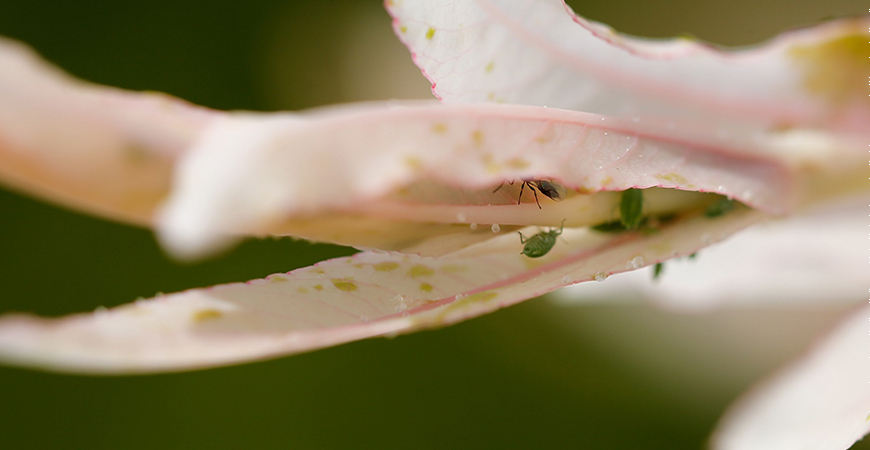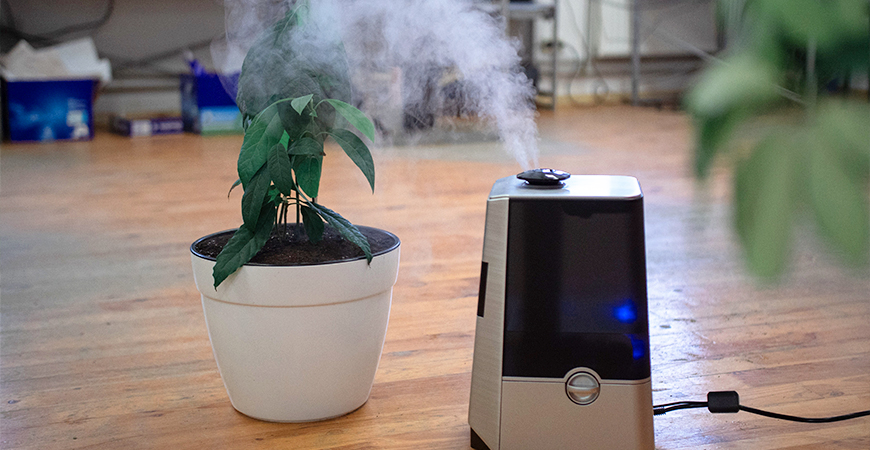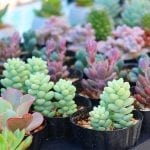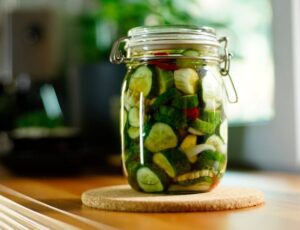
What to Do Before Bringing Plants Inside for the Winter
When chilly air moves in, it’s time for vacationing houseplants to be placed in an indoor space for the winter. Some preparation needs to be done to transition your plants inside successfully.
Tropical houseplants should be brought in if the temperature dips to 45 degrees. It’s also best to bring pots of thyme, oregano, and chives inside to avoid freezing. Additionally, they make a lovely indoor garden on a kitchen window sill!
Here’s a list of things to do before bringing plants inside for the winter.

Eliminate Outside Pests
Any harmful insects such as aphids, spider mites, or mealybugs can make their way indoors and multiply rapidly inside. Wash your plant’s leaves and stems with a strong spray of water to knock off any hidden insects and eggs.
Then spray insecticidal soap or neem oil to kill any remaining pests on each plant’s leaves and stem. To finish, allow it to dry.
Prune or Repot
Did your houseplant grow considerably over the summer? Then you may want to repot or prune it before bringing your plant inside.
When pruning, trim no more than one-third of the plant.
When repotting, choose a container at least 2 inches wider than the current one. This will give the plant lots of room to grow.
If your houseplant grows too large for its pot, it may need repotting occasionally.

How to Repot Your Houseplant:
What You’ll Need:
- Plastic pots
- Peat-based compost
- Small trowel
Step 1
Start by thoroughly watering the day before you plan to repot.
Step 2
To remove the plant, place your fingers on top of the soil, directly over the root ball. Do so while inverting the pot with your other hand.
If the plant resists, use a garden knife to loosen the root ball from the pot.
Step 3
Tap one of the pot’s sides on a hard surface to loosen the plant from the container. If it still doesn’t budge, run a knife between the side of the pot and the root ball. This should loosen the roots.
Step 4
Examine the roots by gently lifting and untangling them. Spreading the roots allows the plant to branch out and firmly grasp the soil.
Step 5
Add a handful of fresh compost to the new pot and place your plant in the pot, centering it.
Check the plant’s depth making sure the top of the root ball is roughly 3/4-inch below the rim of the container. Doing so leaves room to make and add a layer of compost, plus needed water.
Using a trowel, add compost to the base of the pot, around the plant and root ball, and on top.
And finish by firming the soil by pressing down with each one of your fingers.
Step 6
Water your houseplant, and then place the plant in your favorite container.

Acclimating Your Plant From Outdoors to Indoors
The difference between indoor and outdoor growing conditions can be dramatic. Prepare your plants for the transition with the following tips.
- Place plants in a shady spot a couple of weeks before bringing them inside.
- Start bringing them in at night and then moving the plants back outside in the morning.
- Over the span of two weeks, gradually increase the time your plant spends indoors.
- Move your houseplants to a bright indoor spot. It’s most ideal to place plants by the south or west-facing window to get light.
- If you’re short on natural light for each plant, consider purchasing a grow light kit. This helps to ensure your plants inside get enough light.

Providing Humidity
Did you know that dry indoor air can take a toll on houseplants? With this in mind, it may be a sign that your houseplants need humidity, so add water into the indoor air.
Leaves with dry tips and the dropping of leaves indicate that you need to provide humidity in the indoor space.
Try doing one of the following to stop or reduce their craving for humidity:
- Mist your houseplants two times a day.
- Place them on humidity trays.
- Install a room humidifier for a more passive involvement.
Don’t Overwater!
Another critical point is to water sparingly. Most houseplants ‘rest’ and require less water in the winter.
Give them a drink of water when the top 1 to 2 inches of soil feels dry.
No Fertilizer Required
Fertilize your plants four weeks before setting your plants out to grow in the spring. Check your last frost date online at The Old Farmer’s Almanac.
Transitioning Your Inside Plants Back Outside
When mild weather with warm air returns and the danger of frost passes, gradually acclimate your plants to the outdoors. Your favorite greenery will grow and thrive again in the warm spring temperatures.
Are you interested in more easy gardening hints and tips? Click here.
Want to know more about keeping your outdoor spaces clean? Click here to learn how Ron successfully cleaned his outdoor living space.










